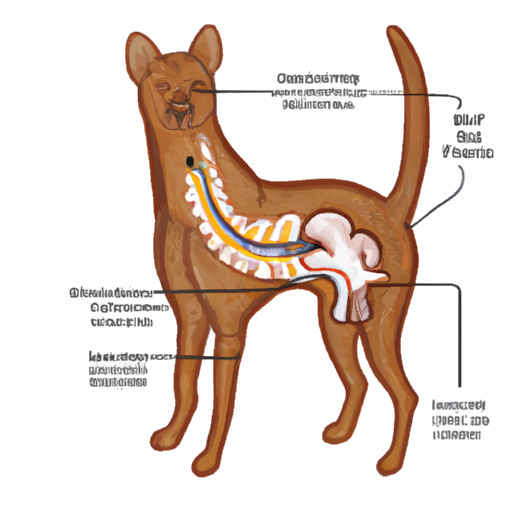Introduction
You, as a caregiver, have an incredible bond with your canine companion. You’ve seen their playful side, their loving side, and maybe even their grumpy side. But have you ever wondered about their anatomy? Specifically, their kidneys? Knowing where your dog’s kidneys are located and understanding their function can help you in the long run to ensure your pet’s health and longevity. Let’s dive in together and explore.
Understanding Your Dog’s Anatomy
Just like in humans, a dog’s kidneys are located towards the back of the body, more specifically in the abdominal cavity. They are tucked up against the spine, typically falling behind the last few ribs. Each dog breed may vary slightly in the exact location due to their unique body structure.
Here is a simplified table to outline the key placements of a dog’s major organs:
| Organ | Location |
|---|---|
| Heart | Chest cavity, behind the sternum |
| Lungs | Chest cavity, surrounding the heart |
| Liver | Under the diaphragm, on the right side |
| Kidneys | Abdominal cavity, tucked against the spine |
The Role of Kidneys in a Dog’s Body
Your dog’s kidneys are crucial for their overall health. They are responsible for filtering the blood, removing waste, controlling blood pressure, and sustaining the balance of electrolytes and acids in your dog’s body. When you feed your dog, their bodies break down the food, and the kidneys work to excrete the leftover waste products.
- Filtering the blood: Kidneys are the body’s natural filtration system. They work hard to remove waste products and toxins from the blood.
- Regulating blood pressure: Kidneys help maintain your dog’s blood pressure by regulating the volume of blood and the concentration of salts in the bloodstream.
- Balancing electrolytes and acids: Maintaining a balance of electrolytes and acids in the body is vital for your dog’s overall health.
Signs of Kidney Problems
Knowing the location and function of your dog’s kidneys is not enough. As a responsible caregiver, you should also be aware of the signs that indicate potential kidney problems. If your dog exhibits any of the following symptoms, they may be experiencing kidney issues:
- Increased thirst and urination
- Loss of appetite
- Weight loss
- Lethargy or depression
- Vomiting or diarrhea
- Bad breath
- Ulcers in the mouth
Frequently Asked Questions
Q: Can dogs live with one kidney?
A: Yes, dogs can function with one kidney. However, regular vet check-ups are necessary to ensure the remaining kidney is healthy.
Q: How can I keep my dog’s kidneys healthy?
A: Provide fresh water at all times, feed them a balanced diet, and avoid toxic substances like certain plants, antifreeze, and certain medications.
Q: Is kidney disease in dogs painful?
A: Yes, kidney disease can cause discomfort and pain to your dog. If you suspect kidney disease, consult your vet immediately.
By understanding your dog’s anatomy and signs of potential kidney problems, you can play a significant role in maintaining your dog’s health. Remember, your furry friend relies on you for their well-being, so stay informed and proactive in their care.



